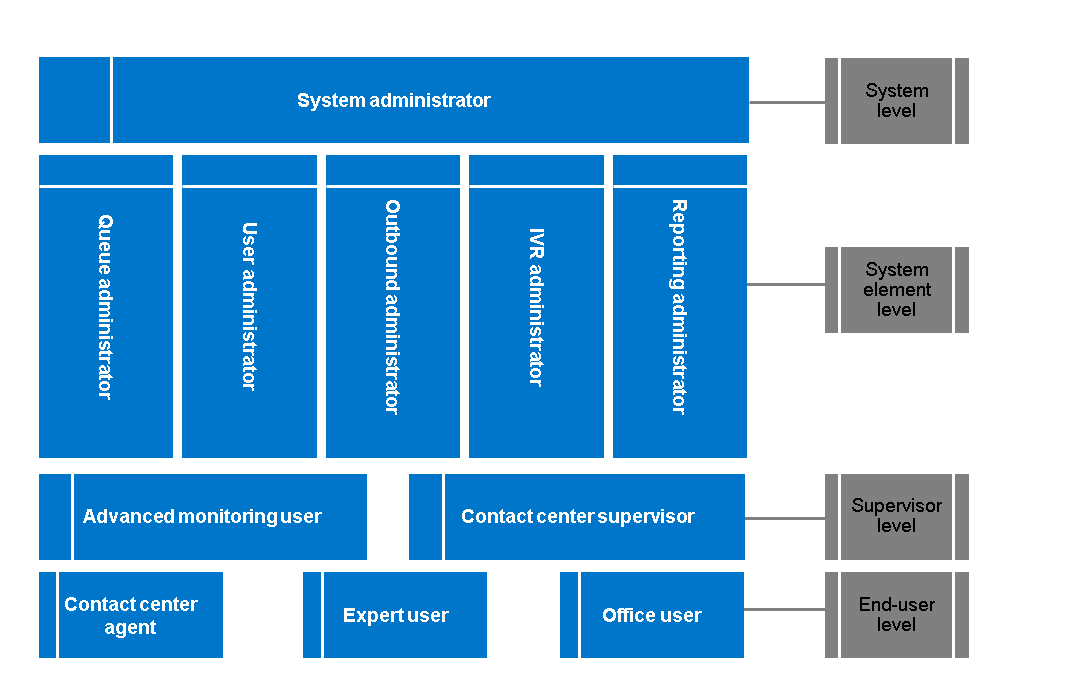Authorization Types
Do not change the original default roles. Copy them and make changes to them according to your needs.
Although the idea is that you can run your system with the default roles, note that you may need to make some additions to them. For example, the CC Supervisor role does no longer include the rights to all users. Changed in SP03.
The roles are as follows:
-
The administrator roles enable administration tasks in System Configurator (SC) user interface.
-
System administrator
The role includes the full access rights to configure Sinch Contact Center and the rights to view business-related data. All these rights also include the grant rights. This means that the user in the system administrator role is allowed to assign these rights to other users.
-
Queue administrator
The role includes rights to manage inbound contact center operations. All these rights also include the grant rights apart from a few exceptions that are listed in the Queue Administrator table. For example, this role has rights to view, create, modify, and delete phone extensions but is only allowed to delegate the view right to other users.
-
User administrator
The role includes rights to manage end-users and functions related to end-users. All these rights also include the grant rights apart from a few exceptions that are listed in the User Administrator table.
-
Outbound administrator
The role includes rights to manage outbound campaigns. All these rights also include the grant rights.
-
IVR administrator
The role includes rights to manage custom IVRs. All these rights also include the grant rights apart from a few exceptions that are listed in the IVR Administrator table.
-
Reporting administrator
The role includes rights to manage settings related to the Reporting and Online Monitoring applications. All these rights also include the grant rights.
-
Monitoring administrator
The role includes rights to monitor contact center activities. No grant rights are included in this role.
-
-
The end-user roles enable carrying out the described tasks in end-user applications, such as Communication Desktop (CDT), ECF, and IP desk phones, and using external agent and Multiterminal Desktop (MTD) functions.
-
Contact center supervisor
This role includes rights to act as a contact center team leader, to manage teams, and to handle customer contacts. No grant rights are included in this role.
-
Contact center agent
This role includes rights to handle customer contacts. No grant rights are included in this role.
-
Expert user
This role includes rights to use Communication Desktop (CDT) as an assistant or as a switchboard operator. No grant rights are included in this role.
-
Office user
This role includes rights to handle personal calls. No grant rights are included in this role.
-
Each role has rights to modify its own settings ().
Do not modify these roles. If you want to change the default roles, copy them and make your modifications to the copied versions.
The following graphic describes the level where the default roles are situated.

